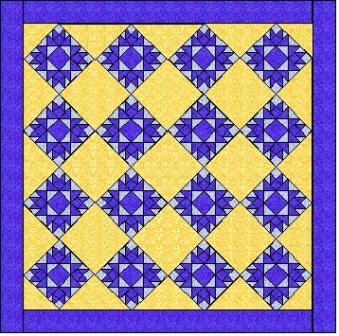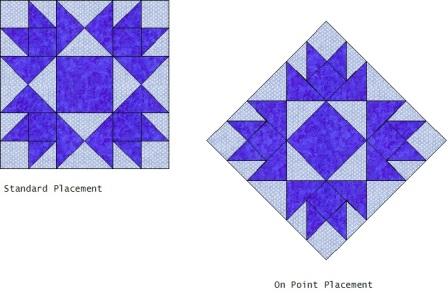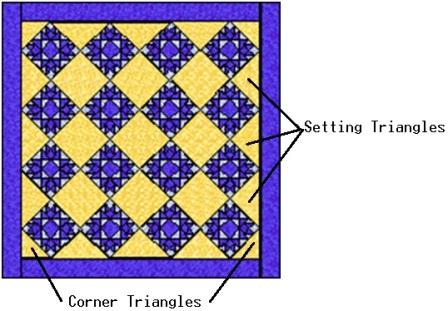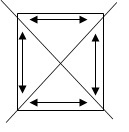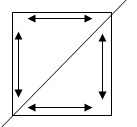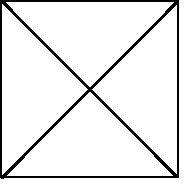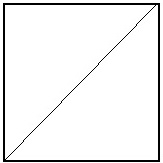Formula for Setting and Corner Triangles

FORMULAS WITHOUT TRAUMAS!!
When we take a square block and turn it 45 degrees so the corners of the block are at the top, bottom and sides, we’ve created an “on-Point” block.
Many quilts take on a marvellous new look when these blocks are placed on point. But how do you calculate the setting triangles that are needed around the edge of the quilt, and what about those four corner triangles, how do you work them out?
When blocks are placed On Point, setting triangles and corner triangles are needed to complete the quilt top.
Sewing On Point blocks together to make a quilt top requires a different technique to the normal way a quilt top is sewn together. First you’ll notice that the rows now run diagonally, and that is the way they need to be sewn together. You’ll also notice that setting triangles are needed to make the quilt square and smaller corner triangle pieces are required for the four corners of the quilt to complete the square.
When making setting and corner triangles, it is very important to observe the straight of grain of the fabric. It is essential that the straight of grain be placed to the outside or border edge of the quilt top. If the bias were to be placed to the outside or border edge, there would be certain stretching, and the quilt top would not be square. The following technique takes the straight of grain issue into account for both the setting triangles and the corner triangles.
To cut both Setting Triangles and Corner Triangles a large primary square is calculated. This square is then cut either into four for Setting Triangles or two for Corner Triangles.
Simple formulas are used to calculate the dimensions for the primary square for both the Setting Triangles and the Corner Triangles.
To calculate Setting Triangles:
Take the finished block size and multiply it by 1.41.
This results with the finished diagonal measurement for the primary square.
Add 1 ¼” to the final diagonal measurement (seam allowances).
Cut the primary square to these dimensions.
Cut diagonally twice to produce four setting triangles.
Formula to calculate the primary square for Setting Triangles:
FBS x 1.41 = FD + 1 ¼” = Primary Square measurement.
Cut diagonally twice.
FBS (finished block size) x 1.41 = FD (finished diagonal) + 1 ¼” = Primary square to cut (round off to nearest 1/8” ). Cut into four diagonally twice.
To Calculate Corner Triangles
As before, a large primary square is calculated and then cut into two (diagonally, once). This produces two corner triangles.
Simple formulas are used to calculate the dimensions for the primary square.
To calculate Corner Triangles:
Take the finished block size and multiply it by 1.41.
This results with the finished diagonal measurement for the primary square.
Divide this measurement by 2.
Add .875 or 7/8” (for seam allowances).
Cut the primary square to these dimensions.
Cut diagonally once to produce two corner triangles.
Formula to calculate the primary square for Corner Triangles:
FBS x 1.41 = FD / 2 + 7/8” = Primary Square measurement.
Cut diagonally once.
FBS (finished block size) x 1.41 = FD (finished diagonal) / 2 + 7/8” = Primary square to cut (round off to nearest 1/8” ). Cut into two triangles diagonally.

Related Articles
Editor's Picks Articles
Top Ten Articles
Previous Features
Site Map
Content copyright © 2023 by Judie Bellingham. All rights reserved.
This content was written by Judie Bellingham. If you wish to use this content in any manner, you need written permission. Contact Judie Bellingham for details.


